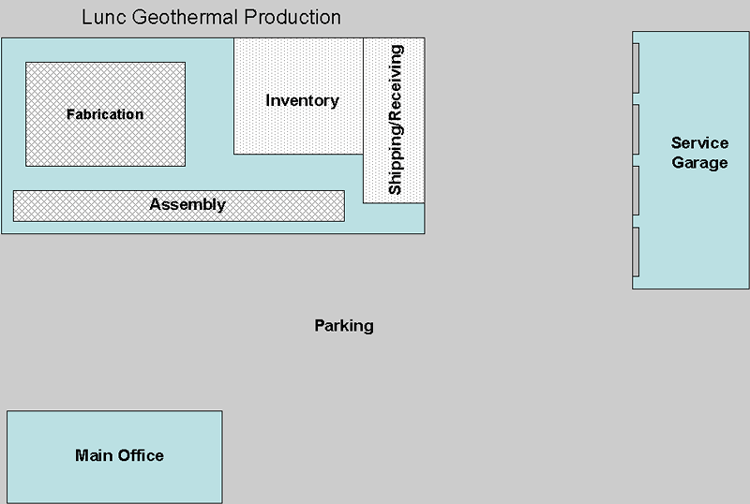
Lünc Geothermal
| Background. Lünc
Geothermal is an engineer's dream. Lünc went to the
best engineering schools she could get into with the idea of developing
environmentally intelligent products that were also economically
intelligent. She has developed a new design to take advantage of
the temperature differential between the earth's surface, where people
live, and the almost constant temperature at not very great depths and
use this for building/home heating and cooling. For
example, depending on the region, one only needs to go down so many
feet to get a nearly constant temperature of 54°. This can then
be used to create a base temperature within a building so that very
small amounts of other
energy sources can be used to adjust this further. We won't get
into how these adjustments can best be implemented in this very short
summary. If you want to read more the following link should help Geothermal
Education Office. You are likely to want to focus on the
paragraphs relating to heat pumps.
She originally intended to develop the products necessary to provide this as a source for forced air and radiant floor heating/cooling for other people to implement. But she found out pretty quickly that she needed to create her own service group to install these products with new construction or renovation. None of the existing heating/cooling contractors seemed to be the slightest bit interested in her products. Her firm is located in southern New England and her service teams have installed systems in Connecticut, Rhode Island and the Berkshires in Massachusetts. Their production facility is in northeastern Connecticut, where they live. Her computing systems are fairly dominated by her husband, Jhull, who is a firm believer and evangelist for open systems views. This implies all of her systems are running Linux, and development is in Java, PHP and HTML using MySQL for databases. Even her everyday office software is Linux based. They have a company web page hosted by an ISP that has very little functionality other than static information pages. Their inventories are kept intentionally small and the production facility has its own PCs and server. Because production is pretty much "on demand" and development times are about a month in duration they largely use computers only to track in-process inventories, in-process developments and test quality. Thus they have a small server, "all you really need when you are using Linux", on a LAN with 10 PCs distributed at key locations within the facility. The software has been developed in house because it is so specialized and unique and they have their own internal expertise. This Token Ring LAN is isolated from their other LANs and internet at this point. Their ordering and billing are actually done through the small office and this is where the SOHO router is located. Orders are placed by phone and entered into the computer. Specs are sent out for verification and down payments. There is a small server with 8 PCs in the office on a small Token Ring LAN. All cabling on the entire site is category 5 or its token ring equivalent. They also have two printers on this office LAN. The updates to the web site are done from this office through the router connected to a DSL line to an ISP. Their service department, who affectionately call themselves Lünc's elves, is largely deployed on an intelligent "seat of the pants" basis. It is demand driven and they have yet to lose any sales due to scheduling or service. Though they know that as they expand this will not be so easy. The Future. Lünc wants to start creating more installation service teams with an emphasis in the northern reaches of the US and southern reaches of Canada. She wants them to be able to be as connected to the "mother ship", as it is affectionately called by her employees, as well as reasonable. At present they do not have appropriate back up capability and when their networks are unified they need to build this in. Another very important consideration has to do with their ever increasing demand and service force. The firm is not quite three years old and the following table contains quarterly demand for the number of installations. |
| Quarter | 1/2000 | 2/2000 | 3/2000 | 4/2000 | 1/2001 | 2/2001 | 3/2001 | 4/2001 | 1/2002 | 2/2002 |
| Installations | 10 | 15 | 30 | 35 | 50 | 65 | 90 | 85 | 100 | 120 |
| It is estimated that a service team of two people with
one truck and other equipment can perform 30 installations each quarter.
There is no point to belaboring their struggles when first starting up.
It is clear this is a fairly quickly growing firm with a lot of potential
for expansion. The Existing Network. We have given a little bit of discussion about the site, but feel it is important to give a little site map so that you can fill in some of the geographic issues for your designs. |

| Remember, they do not yet have any switches. Their one router has average utilizations around 0.65. The router's peak utilizations are about 0.91. All of their machines are very reliable. Jhull makes this one of his top priorities. Their biggest difficulties are with their printers, which are never good enough by anyone's standards. |